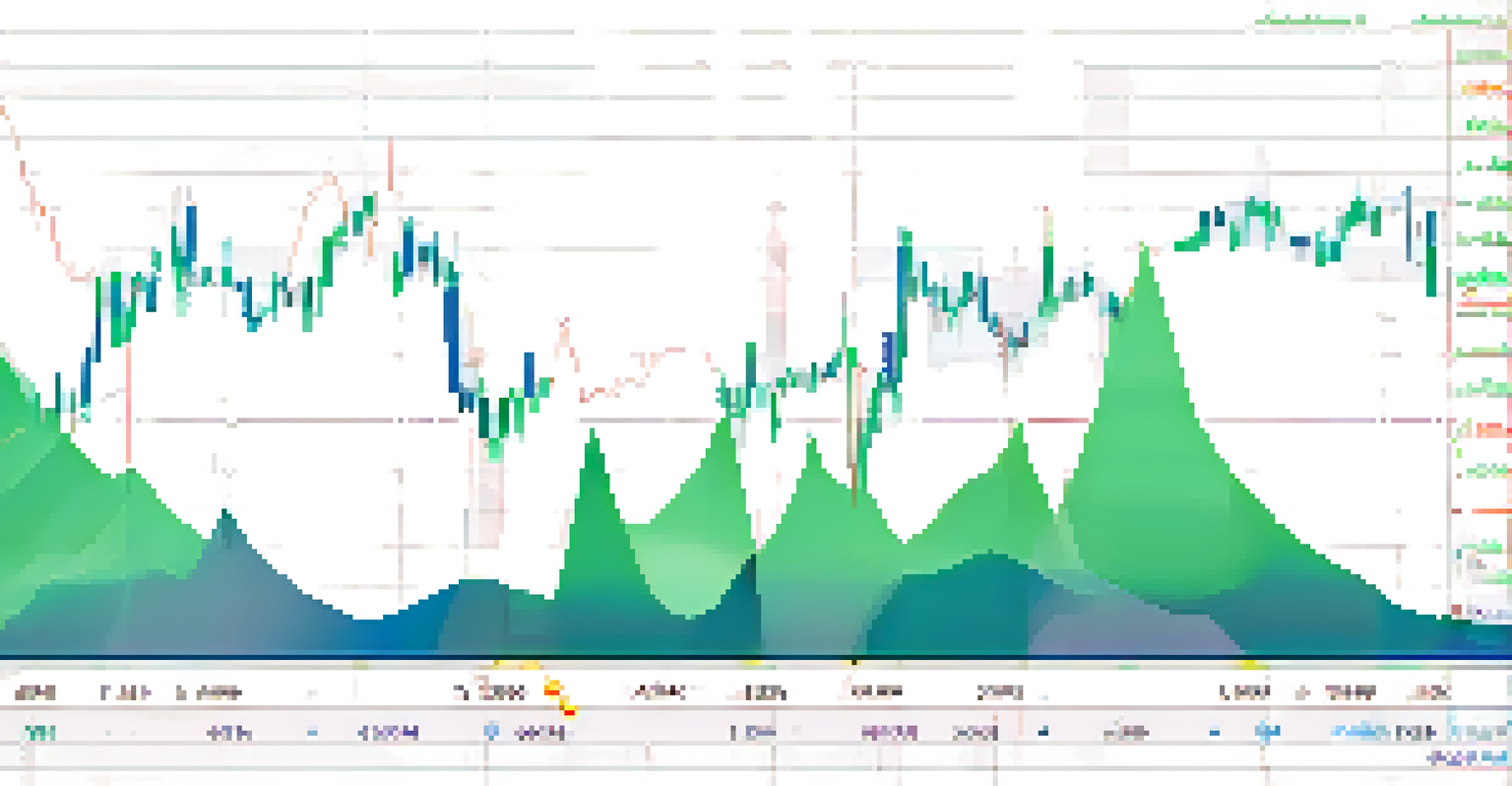Using Moving Averages for Investment Timing Decisions

Understanding Moving Averages: The Basics
Moving averages are statistical tools used to smooth out price data by creating a constantly updated average price. This technique helps investors identify trends by filtering out the 'noise' from random price fluctuations. Essentially, it's like looking at a long-term picture rather than getting bogged down in day-to-day developments.
In investing, what is comfortable is rarely profitable.
There are different types of moving averages, with the most common being the Simple Moving Average (SMA) and the Exponential Moving Average (EMA). The SMA calculates the average of a set number of past prices, while the EMA gives more weight to recent prices. This distinction is crucial because it affects how sensitive the moving average is to price changes.
By understanding these basic concepts, you’re better equipped to utilize moving averages effectively in your investment strategy. They serve as valuable indicators for potential buy or sell signals, guiding you through the often tumultuous waters of the stock market.
Why Use Moving Averages in Investment Timing?
Investors often struggle with timing their entries and exits in the market. This is where moving averages come into play, offering insights into the overall trend of a stock or market. By observing the direction and position of moving averages, you can make more informed decisions, reducing the emotional element often associated with trading.

For example, if a stock's price crosses above its moving average, it may signal a potential buying opportunity, indicating that the trend is turning bullish. Conversely, if the price falls below the moving average, it might suggest that it's time to consider selling or shorting the stock. This straightforward method helps to clarify complex market signals.
Moving Averages: Trend Indicators
Moving averages smooth out price data, helping investors identify trends and potential buy or sell signals.
Using moving averages can also assist in filtering out short-term volatility, allowing you to focus on long-term trends. This perspective can be particularly valuable during periods of market uncertainty, helping you avoid rash decisions driven by fear or greed.
Different Types of Moving Averages Explained
As mentioned earlier, the two most common types of moving averages are the SMA and EMA. The Simple Moving Average calculates the average over a specified time frame, making it easy to understand and implement. However, it may lag in reacting to price changes compared to the Exponential Moving Average.
The stock market is filled with individuals who know the price of everything, but the value of nothing.
The Exponential Moving Average, on the other hand, reacts more quickly to price movements since it gives more weight to the most recent prices. This can be advantageous for traders seeking quicker signals for buying or selling. Choosing between the two often depends on your trading strategy and time frame.
In addition to SMA and EMA, there are other variations like the Weighted Moving Average (WMA) that can also be used. Each type has its strengths, and understanding how they differ can help you select the one that best fits your investment approach.
Setting Up Moving Averages for Your Strategy
To effectively incorporate moving averages into your investment strategy, you first need to determine the time period that suits your goals. Short-term traders might use a 10 or 20-day moving average, while long-term investors may prefer a 50 or 200-day average. This choice can significantly impact your results and the signals you receive.
Next, consider combining different types of moving averages for a more comprehensive view. For instance, using both the 50-day SMA and the 200-day SMA can help you identify crossover points, which are often regarded as strong buy or sell signals. This strategy, known as the 'Golden Cross' or 'Death Cross,' is widely followed by many investors.
Types of Moving Averages Explained
The Simple Moving Average (SMA) and Exponential Moving Average (EMA) differ in sensitivity to price changes, influencing trading strategies.
Finally, it's essential to backtest your moving average strategy on historical data to see how well it would have performed. This practice allows you to refine your approach and gain confidence in your investment decisions.
Identifying Buy and Sell Signals with Moving Averages
Moving averages can serve as powerful indicators for buy and sell signals. A common approach is to look for crossovers, where a shorter moving average crosses above or below a longer moving average. When the shorter average crosses above the longer one, it could indicate a bullish trend, suggesting it might be a good time to buy.
Conversely, if the shorter moving average crosses below the longer one, it may signal a bearish trend, indicating it might be time to sell. These crossover points can often act as clear visual signals for traders, making it easier to execute timely decisions.
However, it's important to remember that no single indicator is foolproof. Complementing moving averages with other technical indicators, like Relative Strength Index (RSI) or MACD, can provide additional confirmation and improve your trading accuracy.
Limitations of Moving Averages in Trading
While moving averages are valuable tools, they do have limitations. One major drawback is that they are lagging indicators, meaning they react to price movements rather than predict them. This lag can lead to missed opportunities or late entries and exits, especially in volatile markets.
Additionally, moving averages can generate false signals, particularly in choppy or sideways markets. For instance, during periods of consolidation, prices may cross above and below moving averages frequently, leading to confusion and potential losses. It's essential to be aware of these situations and adjust your strategy accordingly.
Combining Strategies for Success
Using different moving averages together and backtesting strategies can enhance decision-making and improve investment outcomes.
To mitigate these limitations, consider using moving averages in conjunction with other analytical tools. This multi-faceted approach can help you confirm trends and signals, ultimately leading to more informed investment decisions.
Real-Life Examples of Moving Averages in Action
To illustrate the effectiveness of moving averages, consider a hypothetical investor analyzing a tech stock. By applying a 50-day moving average to the stock's price chart, the investor notices a bullish crossover when the price rises above the moving average. This could prompt the investor to enter a position, anticipating further price appreciation.
Conversely, if the same investor observes that the stock's price dips below the 50-day moving average, it may signal a time to exit the position. Such real-time decision-making, guided by moving averages, can help investors navigate the market more effectively.

Throughout various market conditions, many successful investors and traders have relied on moving averages to inform their decisions. By studying historical price movements and trends through this lens, you can gain insights that assist in crafting your investment strategy.